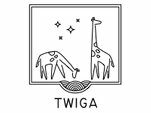Fortunately, the attention for environmental accounting and ecosystem accounting is growing. We need more systems for inclusive measurement, monitoring and evaluation.
There are many initiatives:
- On environmental and ecosystem accounting, such as the System of Environmental Economic Accounting (SEEA) (here), The Economics of Ecosystems and Biodiversity (TEEB) (here) and Earth Observation for Ecosystems Accounting (EO4EA) (here),
- On footprint calculations, such as on water: https://waterfootprint.org/,
- On making supply chains transparent (see here) and excellent education material, such as CBD’s “Ecosystem natural capital accounts – A quick start package” (here).
But they are not used as the basis for decision-making. Just to give an example: in the Netherlands, there is a great exercise on ecosystem accounting in the province of Limburg, (here), but, as far as I know, this and the more general system of national environmental accounts are not the guiding principles for decision making.
When it comes to decision making “traditional” economic arguments prevail. This leads to problems when policy measures for climate change get into conflict with cost-benefit calculations according to the narrow definition. Especially when this has been going on for decades, the consequences are severe. Look for example at the protests of Dutch farmers, who feel they are unfairly treated by the government with measures aimed at reducing the nitrogen surplus.
Of course, one could start a discussion about the metrics used in environmental accounting or ecosystem accounting and their validity. But the same applies to economic calculations, see for example Dan Brockington’s blog on farmers’ assets in Tanzania (here).
Why is it so difficult to integrate the two types of accounts? Perhaps because:
- Environmental accounting and ecosystem accounting are seen as instrument of environmental lobby groups;
- They are perceived as complicated (material for specialists), with new and unfamiliar concepts;
- Associated to previous points: there are many assumptions and uncertainties that can be questioned;
- The outcomes can be painful and require fundamental policy changes, (look for example at water use in Mauritius and the interests of the agricultural and tourist sector);
- Related to the previous point: they deal with long-term benefits versus short-term economic gain;
- The main actor involved is the government, a notorious slow changer (and changes of mindset take a long time for anyone).
My own experience in agriculture is that environmental accounting and ecosystem accounting rank very low on priority lists of what should be addressed: increasing production and productivity and reducing (disaster) risk come first. However, this does not mean that people do not care about sustainability, climate, or environmental issues. It simply means that incentives should be changed and, as part of that process, the concept of environmental and ecosystem accounting should be promoted more.
Certification is certainly a step in the good direction. And integration with data gathering and data analysis can help (look at reports like “Counting on the world to act”: here) Two H2020 projects, sponsored by the European Commission and dedicated to the improvement of data provision and analysis for food security, water and climate change in Africa, TWIGA ( visit here) and AfriCultuReS (visit here) can make a small but important contribution to get environmental and ecosystem accounting from the trunk of the car to the dashboard!
Written by: Mark Noort
HCP international

